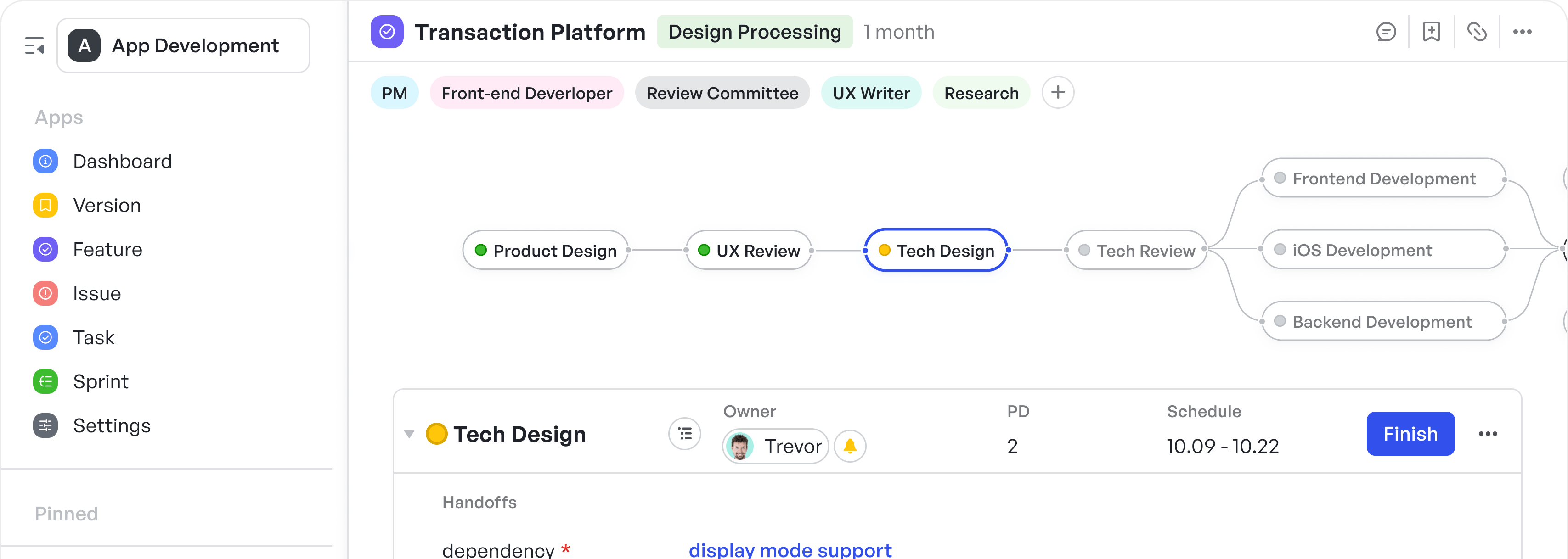Ticket-Based Incident Management is at the core of daily operational activities, representing the most common and frequent scenarios. It encompasses the entire process from ticket creation, modification, classification, aggregation, monitoring, and alerting to escalation, closure, and knowledge retention.
Different management models, product types, and SLA requirements pose unique challenges for each organization's operational management. As the backbone of the operation, agility and efficiency directly influence customer experience and, consequently, customer loyalty. A robust operational management tool can effectively implement incident management SOPs while allowing for customized processes based on standardized frameworks.
Introduction
Meegle's solution for ticket-based incident management should offer agility and flexibility, effective knowledge retention, real-time alert monitoring, and a comprehensive data dashboard. It supports organizations in establishing quality systems, creating a lightweight operational hub, and building a strong backend.
Ticket-based issue management systems, while essential for structuring support and resolution processes, come with their own set of challenges for operation teams. Here are some of the key difficulties they may encounter:
Challenges of Ticket-Based Incident Management
- Volume Overload
- Volume Overload
High volumes of tickets can overwhelm the system and the staff, especially if there are insufficient resources or if the issues are too complex. This can lead to delays in resolution times and a backlog of unresolved tickets.
- Misclassification and Prioritization Issues
- Misclassification and Prioritization Issues
Incorrectly classifying or prioritizing tickets can lead to misallocated resources, where trivial issues consume time that should be dedicated to more critical problems. This misclassification can stem from vague user descriptions or lack of clear guidelines for ticket handlers.
- Inadequate Tracking
- Inadequate Tracking
Without effective tracking mechanisms, tickets can get lost in the system, leading to unresolved issues and frustrated users. Ensuring each ticket is followed up on through to resolution requires diligent management and can strain resources.
- Communication Gaps
- Communication Gaps
Communication between the customer and the support team, and internally among the support team, needs to be clear and consistent. Miscommunications can lead to incorrect resolutions, repeated work, or unresolved tickets, degrading customer satisfaction.
- Integration with Other Systems
- Integration with Other Systems
Operation teams often use multiple systems to manage different aspects of the business. Inadequate integration of the ticket-based system with other critical systems (like CRM or ERP) can hinder the flow of information and slow down the resolution process.
- Skill Gaps
- Skill Gaps
Resolving certain types of tickets may require specific technical skills or knowledge that the current team might not possess. Continuous training and updates are necessary to keep the team capable of handling emerging issues.
- Burnout and Morale
- Burnout and Morale
Continuous pressure to resolve an endless influx of tickets can lead to burnout among team members. Maintaining morale and motivation in face of such repetitive and sometimes monotonous tasks is crucial but challenging.
- Feedback and Improvement Cycles
- Feedback and Improvement Cycles
Incorporating feedback into the ticket resolution process and making continuous improvements to prevent recurring issues requires additional effort and system capabilities, which can be a challenge to implement effectively.
Addressing these challenges involves strategic planning, appropriate staffing, robust software solutions, and continuous improvement in processes and tools.
Meegle's solution for Ticket-Based Incident Management
- Customizable Incident Types
- Customizable Incident Types
Different processes can be tailored based on incident types, including consultation requests, optimization suggestions, bug reports, personnel complaints, and system alerts.
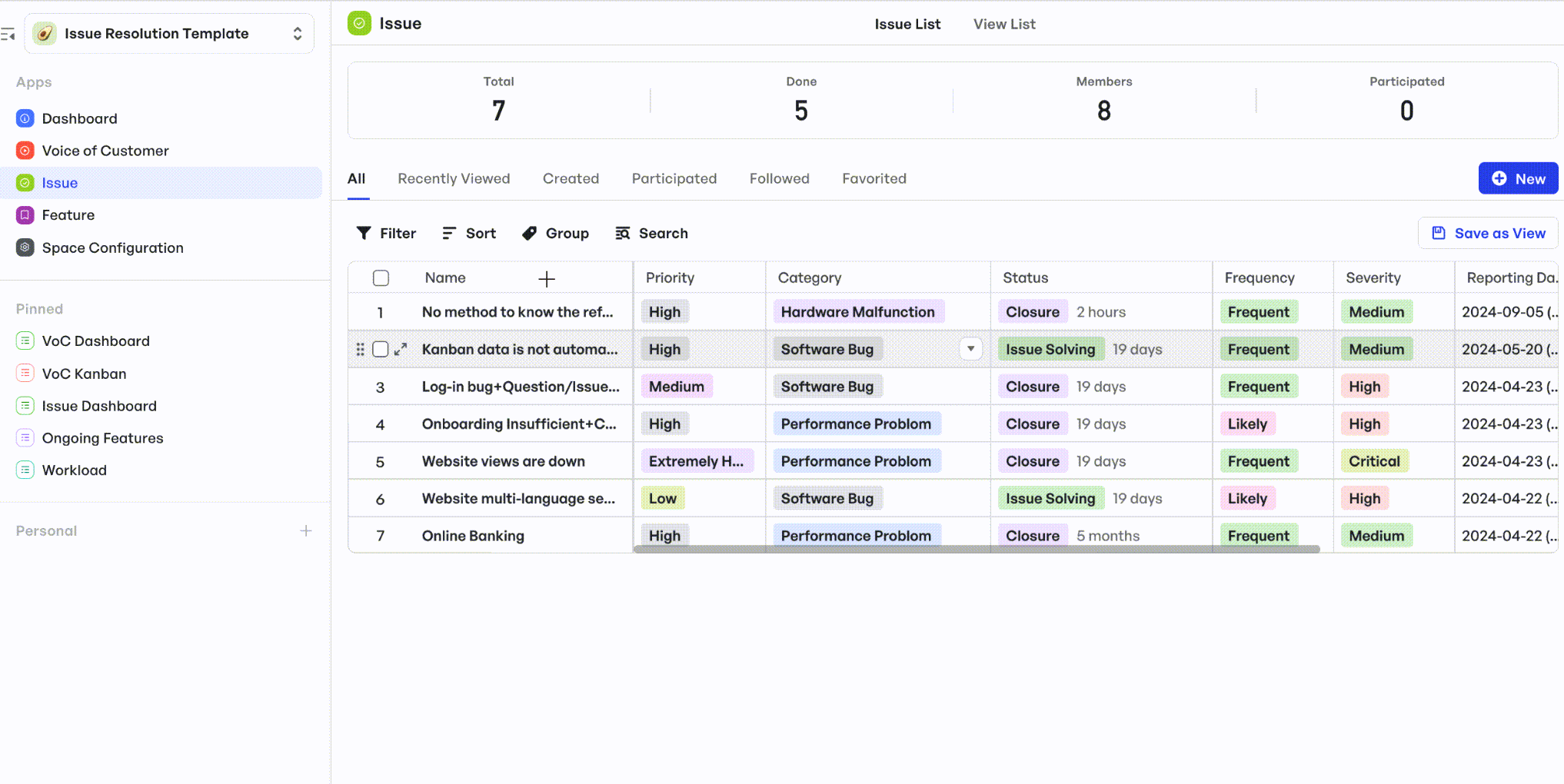
250px|700px|reset
- Service Level Agreement Standard Execution Process
- Service Level Agreement Standard Execution Process
Timeliness and categorization can be flexibly configured with automated rules based on organizational management needs. It supports the configuration of metric charts for clear visibility on SLA violations, allowing for detailed follow-ups on specific incidents.
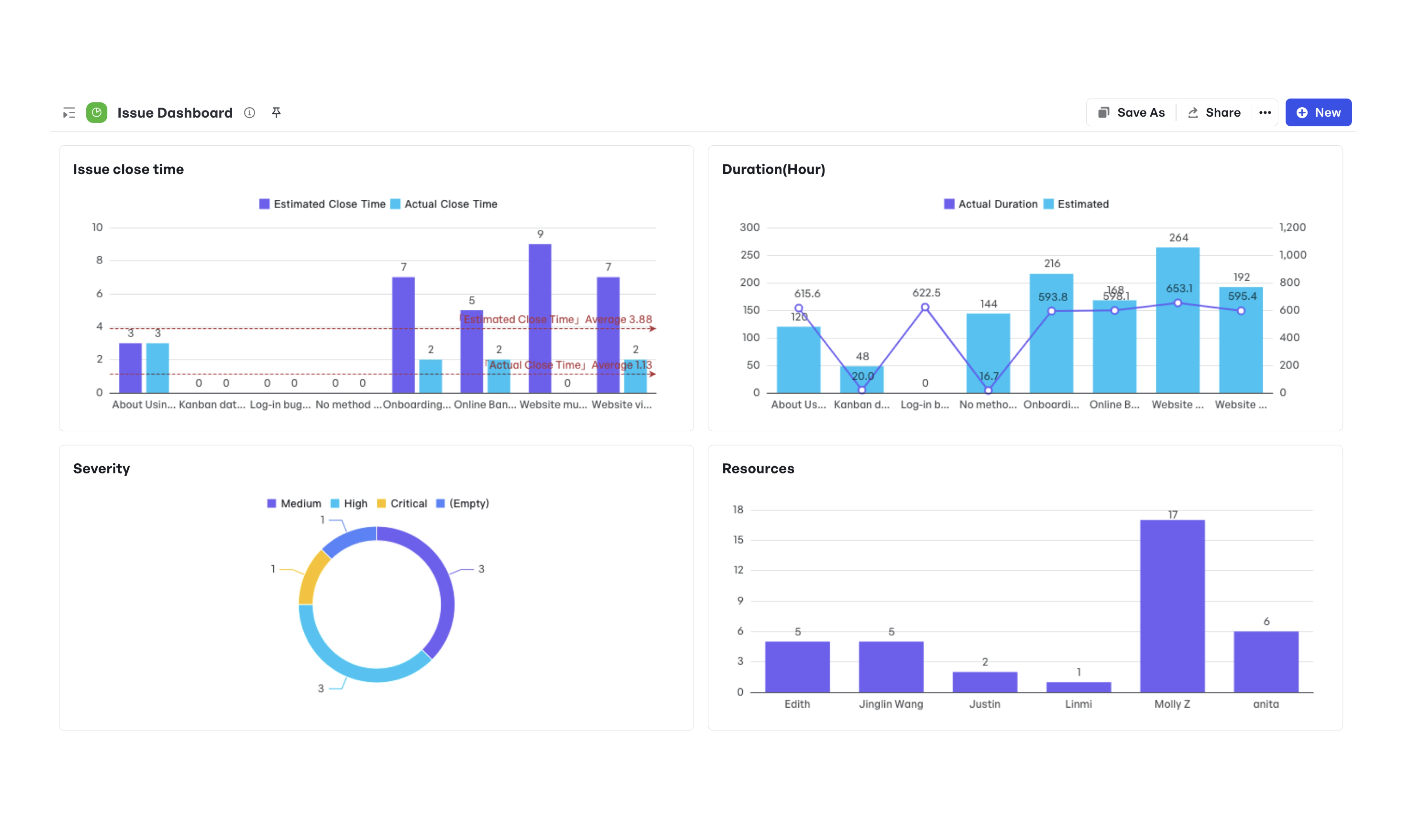
250px|700px|reset
- Capture Voice of Customer
- Capture Voice of Customer
Select the 'Question / Issue, Solution Needed' tag in the Feedback Category field, and an issue ticket linked to the VoC will be created automatically.
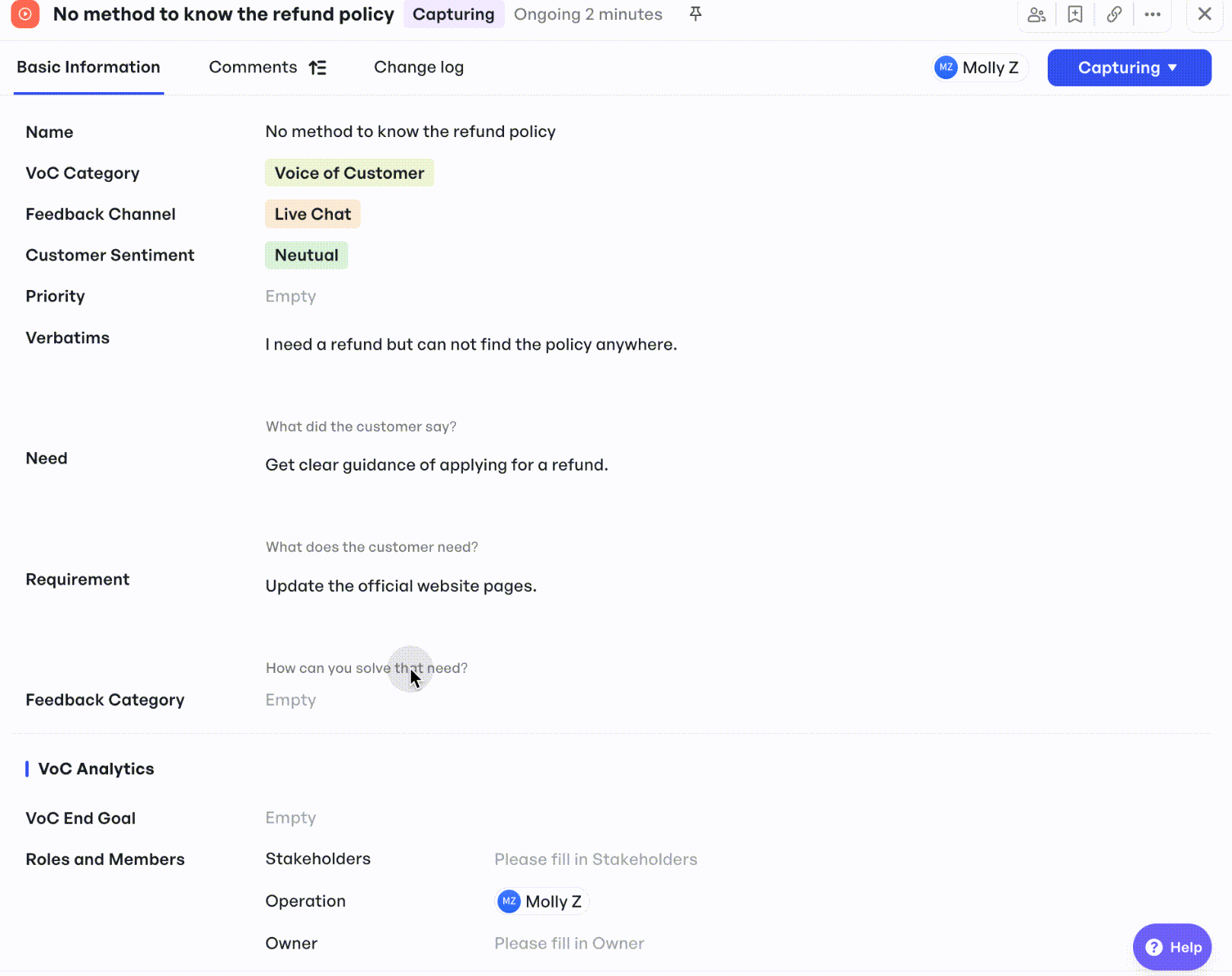
250px|700px|reset
- Issues Aggregation
- Issues Aggregation
Issues related to the similar customer voice can be aggregated with a clear connection.
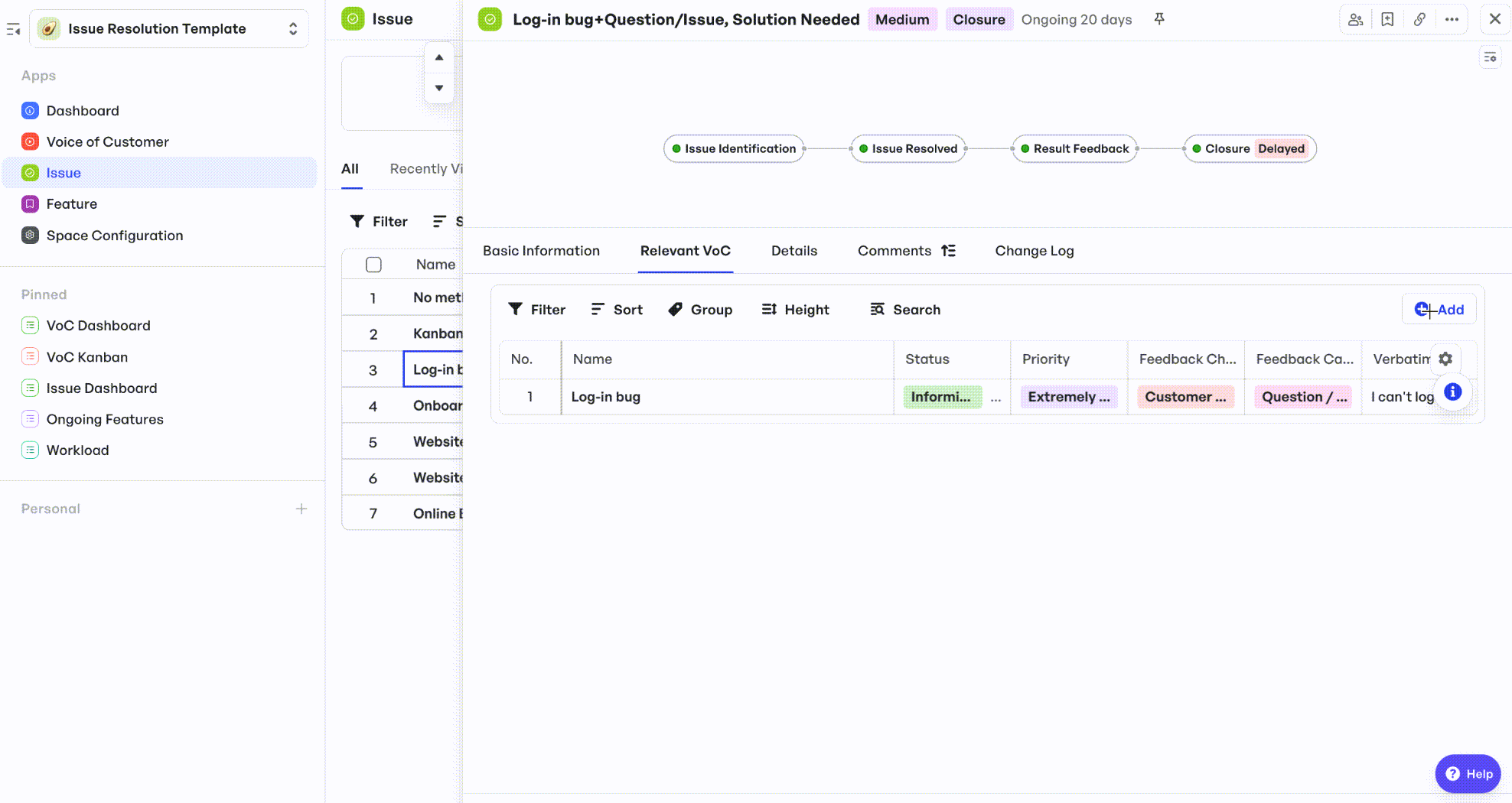
250px|700px|reset
- Issue Categorization and Prioritization
- Issue Categorization and Prioritization
Fill in the Category, Occurrence, Severity, and Priority fields on the node form and finally select the review result. By selecting the three different review results, you will enter into three different processes.
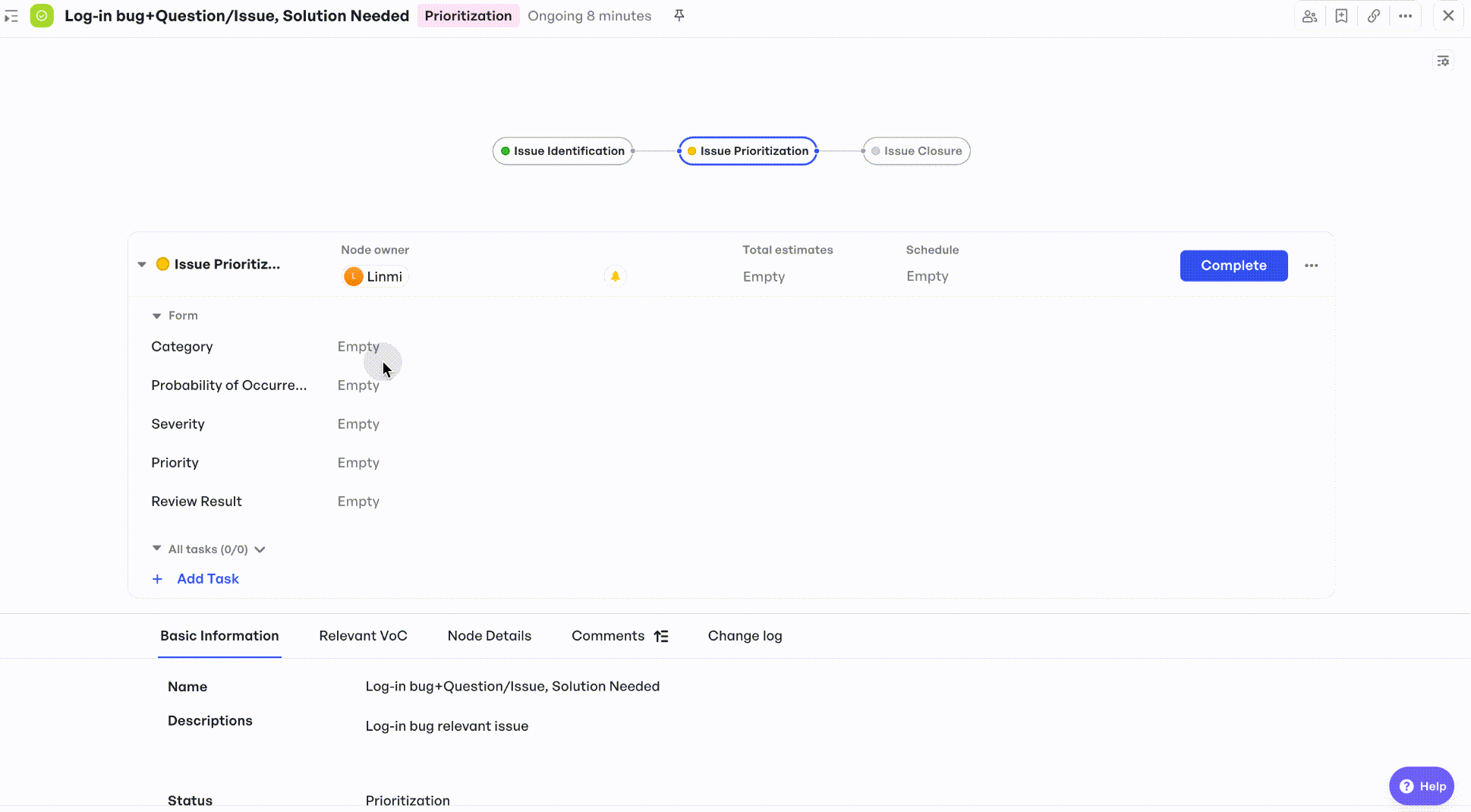
250px|700px|reset
- Root Cause Analysis
- Root Cause Analysis
With the root cause identified, stakeholders should engage in a thorough analysis to understand not only how the issue arose but also to map out its broader implications on the organization. This step often involves evaluating data, reviewing processes, and consulting with affected parties.
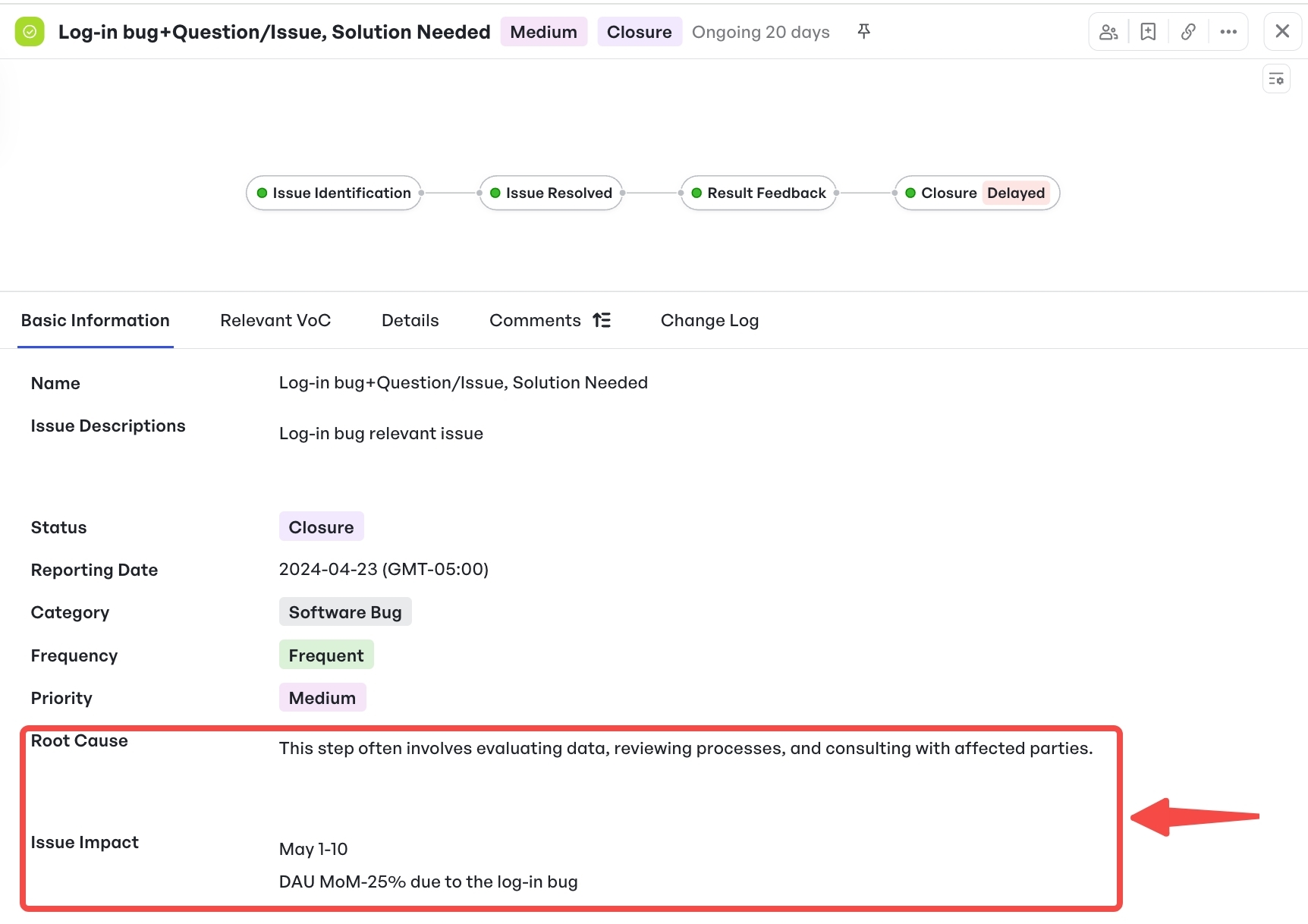
250px|700px|reset
- Issue Summary
- Issue Summary
Documenting the resolution process, including the decisions made, actions taken, and lessons learned is imperative. This serves as a key resource for future issue resolution and continuous improvement.
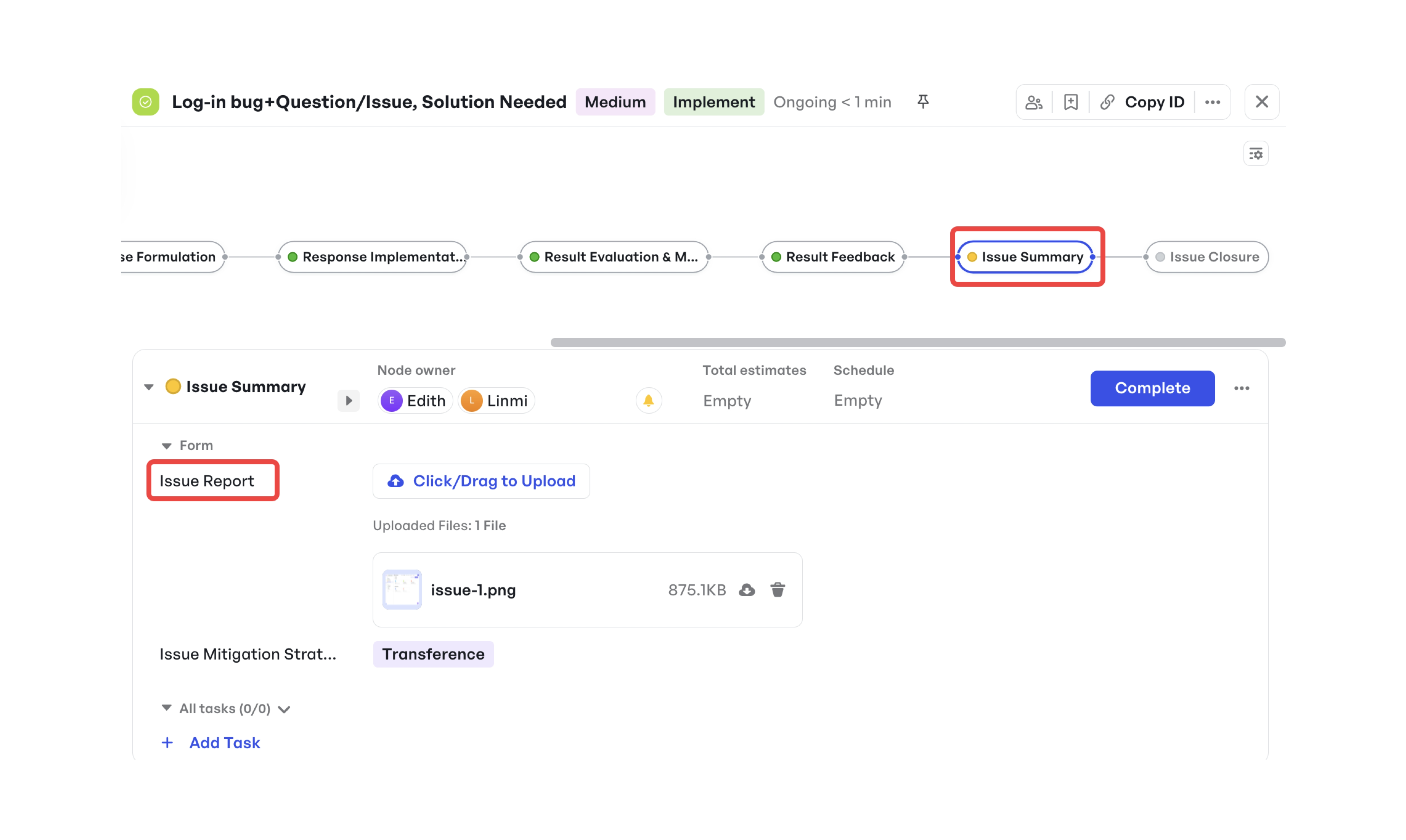
250px|700px|reset
- Issue Analysis
- Issue Analysis
Customizable charts can be created for different issue priorities, channels, etc for monitoring.
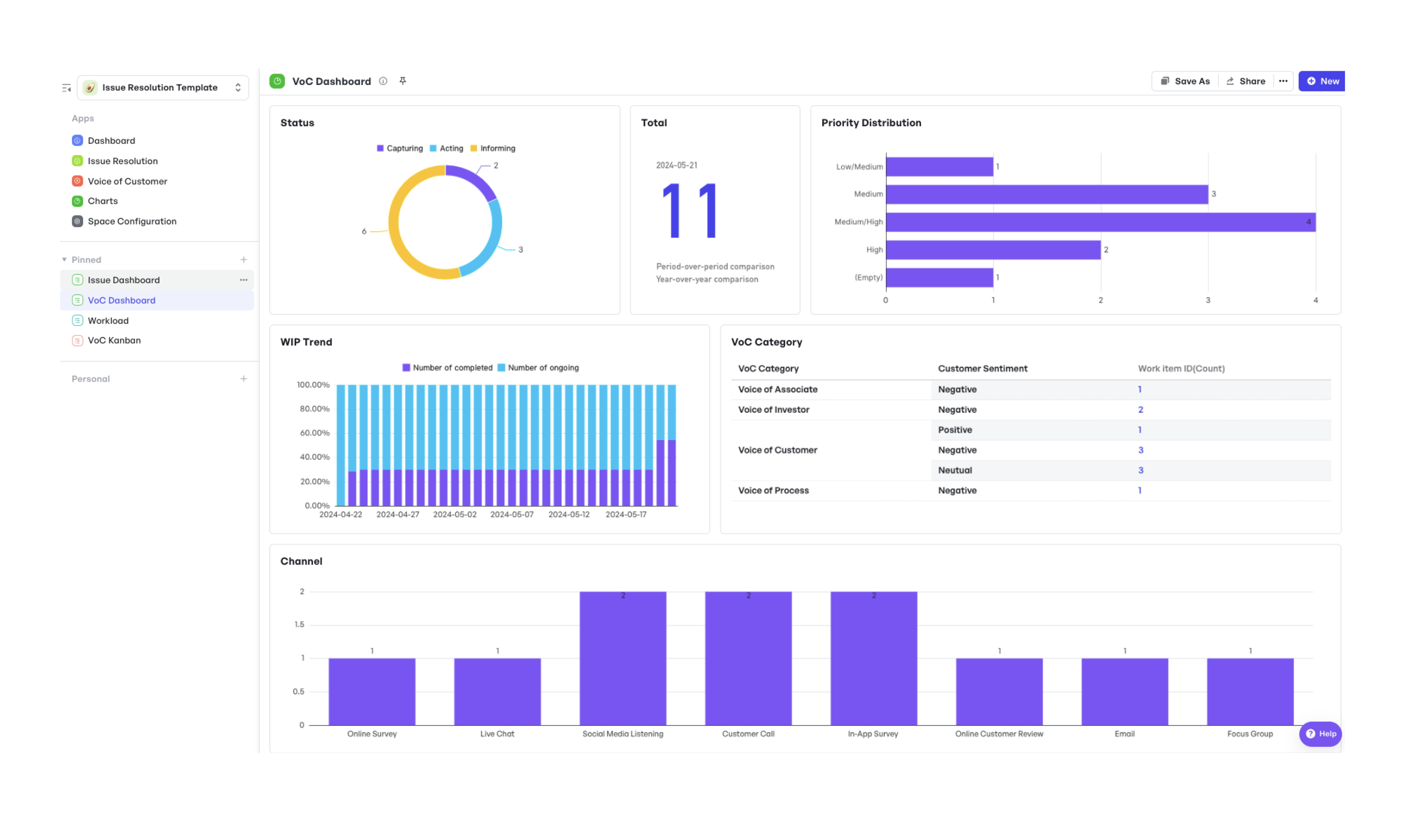
250px|700px|reset
FAQ
- What is ticket-based incident management?
- What is ticket-based incident management?
Ticket-based incident management is a structured approach to handle operational issues and requests. It involves generating a ticket at the occurrence of an issue, which is then tracked through modification, classification, aggregation, monitoring, alerting, escalation, closure, and knowledge retention.
- How does ticket-based management improve customer experience?
- How does ticket-based management improve customer experience?
By efficiently managing incidents from issue to resolution, companies can resolve problems faster, reducing downtime and frustration. This direct impact on service quality enhances overall customer experience and fosters stronger loyalty.
- What are the key features of an effective ticket-based management tool?
- What are the key features of an effective ticket-based management tool?
An effective ticket-based management tool should offer customizable process workflows, agility and flexibility in operations, real-time alert monitoring, effective knowledge retention, and comprehensive data dashboards to support varied management models and service level agreements (SLAs).
- Can ticket-based systems be customized for different operational models?
- Can ticket-based systems be customized for different operational models?
Yes, modern ticket-based systems are designed to be versatile and can be customized to fit the unique challenges and requirements of different management models, product types, and SLAs, ensuring that each organization's operational management is efficiently upheld.
- What role does knowledge retention play in ticket-based incident management?
- What role does knowledge retention play in ticket-based incident management?
Knowledge retention is crucial in ticket-based systems as it ensures that the insights and resolutions gathered from past incidents are preserved. This allows for quicker resolution of similar future issues and contributes to the continuous improvement of the support process.
- How can businesses implement a ticket-based incident management system?
- How can businesses implement a ticket-based incident management system?
To implement a ticket-based system, businesses should first assess their current incident management processes and needs, choose a robust operational management tool that aligns with their organizational goals, and train their team on the new system. It is also important to continuously refine the system based on feedback and evolving requirements.


